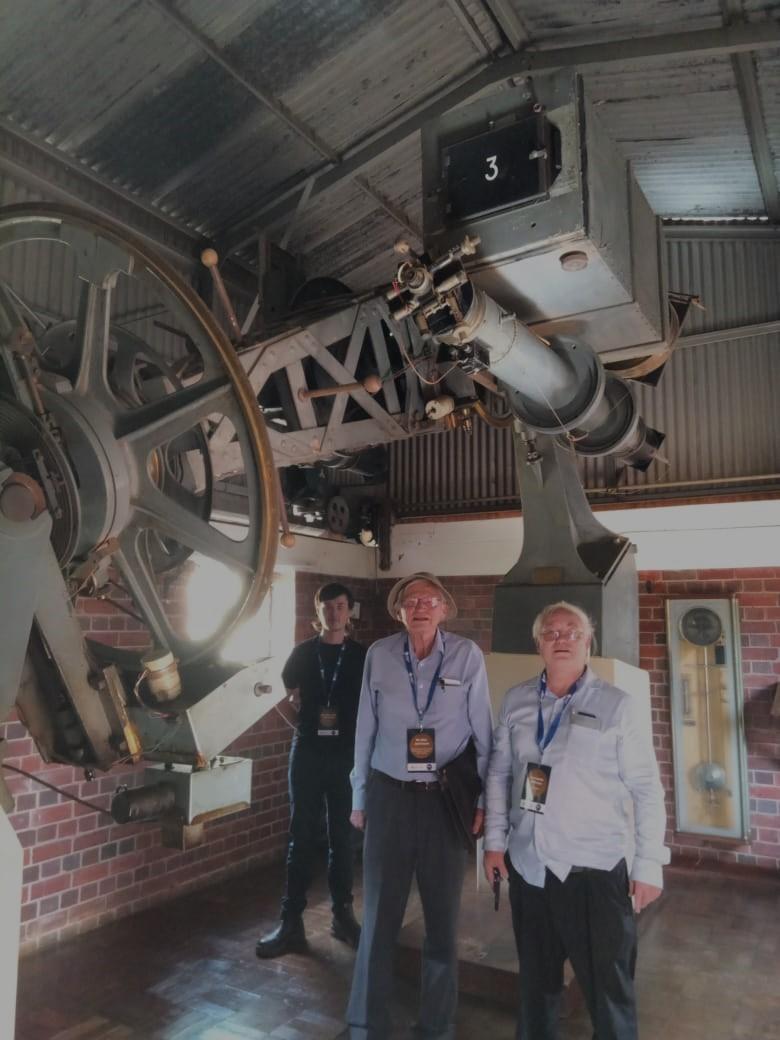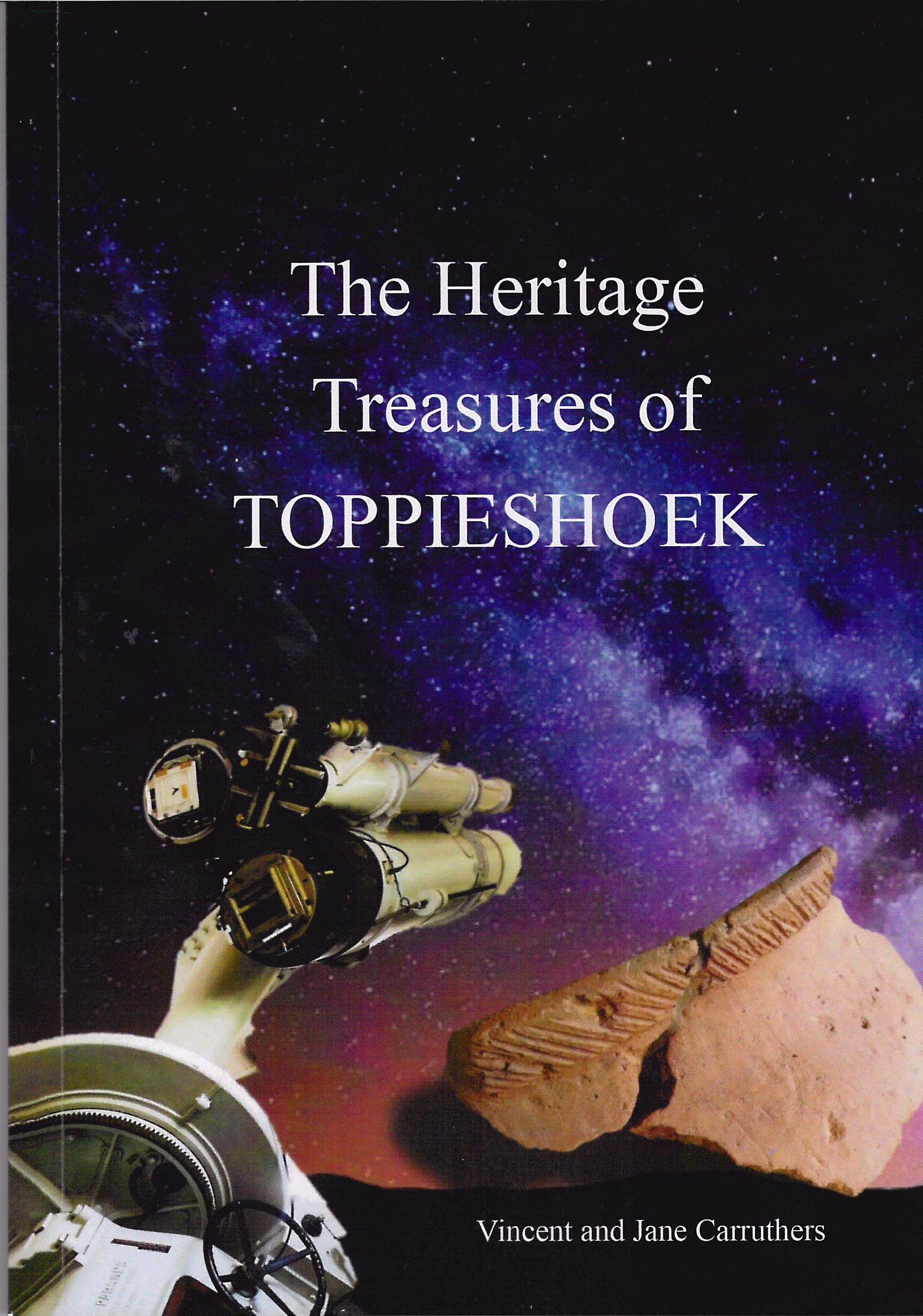Disclaimer: Any views expressed by individuals and organisations are their own and do not in any way represent the views of The Heritage Portal. If you find any mistakes or historical inaccuracies, please contact the editor.
Toppieshoek might not yet be a familiar placename, nor is its unique heritage widely recognised, but this is about to change. There are two heritage sites on the property, and they are very different from one another: one is the critically important archaeological remains of Early Iron Age farming settlement, dating from 350 AD, while the other is the Leiden University Observatory’s old Southern Station that operated from 1953 to 1978.
Three Blue Plaques were unveiled on Toppieshoek on 9 March 2024 in a splendid celebration to mark the Toppieshoek Restoration Project, a collaborative venture between the Magaliesberg Association for Culture and Heritage (MACH) and Tshwane University of Technology (TUT), owner of the 60ha property overlooking Hartbeespoort Dam. More than 120 people attended the event, including the Vice-Chancellor and Principal of TUT, Prof Tinyiko Maluleke who unveiled the Blue Plaque, Ms Kenetswe Mosenogi, the North West MEC for Arts, Culture and Recreation, Jessica Glendinning Policy Officer: Culture and Media of the Embassy of the Kingdom of the Netherlands, as well as numerous other dignitaries from the University and public life.
Kenetswe Mosenogi, MEC for Arts and Culture, and Professor Maluleke, Principal and Vice-Chancellor of TUT, listening to the presentations (Sally Gaule)
The Tshwane University Choir entertained guests as they arrived and during the unveiling ceremony. Note also the flags and banners in the grounds which gave a very festive ambiance. (Sally Gaule)
Toppieshoek is currently utilised for TUT student recreation and team building and, until recently, its treasures were unappreciated. Last year MACH set out to bring the two heritage treasures of Toppieshoek to national attention and began investigating the heritage sites and working with TUT on ways to conserve, restore and utilise them for the benefit of TUT and its students and for the nation at large.
The archaeological site was discovered by Arnout van Genderen, one of the Dutch astronomers working at Toppieshoek in the early 1970s. He discussed his find with Wits archaeologist Revil Mason who immediately appreciated its age and importance. He, and later Tom Huffman, excavated there, and the information gained about the life of an Early Iron Age farming community changed our knowledge of the earliest Black communities in southern Africa. It was declared a National Monument in 1980 and a Provincial Heritage Site in 2002. Today, however, the site is overgrown and virtually invisible. As TUT is an institution of technical education, with strong Nature Conservation and Environmental Science Departments, students could learn a great deal from the careful management of this environment.
When light pollution in Johannesburg compromised astronomical observations in the city in the 1950s, astronomers from the Leiden University Observatory arranged to move out from the Republic Observatory to Toppieshoek. There, important discoveries contributed to the growing knowledge of the universe, particularly from the study of variable stars. When the Observatory at Toppieshoek was closed 25 years later, two historic telescopes remained on the site, still housed in their original observatory buildings. Today they are in a state of neglect and disrepair, but basically undamaged. The two instruments are the Franklin-Adams telescope and the Rockefeller Twin Astrograph.
The Franklin Adams telescope was built in 1903 to photograph the first high resolution atlas of the entire sky. It is of considerable historic interest but needs to be cleaned and restored as an historical exhibit. Looking on are astronomers Benjamin van Jaarsveld; Alec Jamieson (who is cataloguing and digitising 12,000 Franklin-Adams photographic plates currently housed at Wits University); Professor Matie Hoffman (Head of School of Physics at University of Free State and responsible for Boyden Observatory). (Dawie van Jaarsveldt)
The leaders of the MACH project, Vincent and Jane Carruthers, are in touch with some of the now-retired Dutch astronomers in the Netherlands, who used these telescopes and who lived on the property. They also enlisted the assistance of professional astronomers and archaeologists to assess how TUT’s students could benefit from restoring the telescopes and the ancient settlement.
Vincent Carruthers gave a lecture on the Toppieshoek Project (Sally Gaule)
The collaborative project between MACH and TUT has resulted in the following:
- A Memorandum of Understanding has been signed between MACH and TUT.
- Six information boards, giving details of the archaeological and astronomical heritage, have been erected by MACH on the site.
- An exhibition of artefacts from the Early Iron Age Site was mounted at Toppieshoek for the Blue Plaque unveiling.
- A report detailing recommendations for future curation, restoration, and use by TUT has been presented to TUT management. This document includes a comprehensive bibliography of literature relating to both sites.
- Three Blue Plaques were unveiled on 9 March 2024.
- A booklet entitled The Heritage Treasures of Toppieshoek, by Vincent and Jane Carruthers has been published by MACH and is available for R100 from Mike Benn mike.2sparrows@gmail.com
Booklet cover
Main image: An exhibition of some of the artefacts found by Prof. Van Genderen that led to the discovery of the Early Iron Age Site (Sally Gaule)
About the authors
Jane Carruthers is Professor Emeritus at the University of South Africa, elected Fellow of the Royal Society of South Africa and Member of the Academy of Science of South Africa. She has been awarded many international visiting research Fellowships, including at Cambridge University, the Australian National University and others. She is a former President of the International Consortium of Environmental History Organizations, the Southern African Historical Society, Chair of the Academic Board of the Rachel Carson Centre Ludwig Maximilian University, Munich, Editor-in-Chief of the South African Journal of Science, and recipient of the Distinguished Scholar Award from the American Society for Environmental History. She pioneered the discipline of environmental history in South Africa and her book, The Kruger National Park: A Social and Political History (1995) has become a standard reference worldwide. Her research interests are broad, and include environment history, national parks, the history of science, land reform, colonial art, ad comparative Australian-South African history. She is the author of numerous books, as well as many book chapters and articles in scholarly journals.
Vincent Carruthers has written several books including The Magaliesberg (four editions), Cradle of Life (2019) and The Wildlife of Southern Africa (three editions). In 2006 he initiated the project to have the Magaliesberg region declared a UNESCO Biosphere Reserve. He has received awards from various institutions including the Gold Medal of the Heritage Association of South Africa in 2022 the University of the Witwatersrand Gold Medal in 2016 and the North West University Chancellor’s Medal in 2013. He has been CEO of WESSA, chairman of Birdlife South Africa and member of the North West Parks and Tourism Board. Currently retired from his management consultancy, he is enjoying writing for the Magaliesberg Association for Culture and Heritage.
Comments will load below. If for any reason none appear click here for some troubleshooting tips. If you would like to post a comment and need instructions click here.


